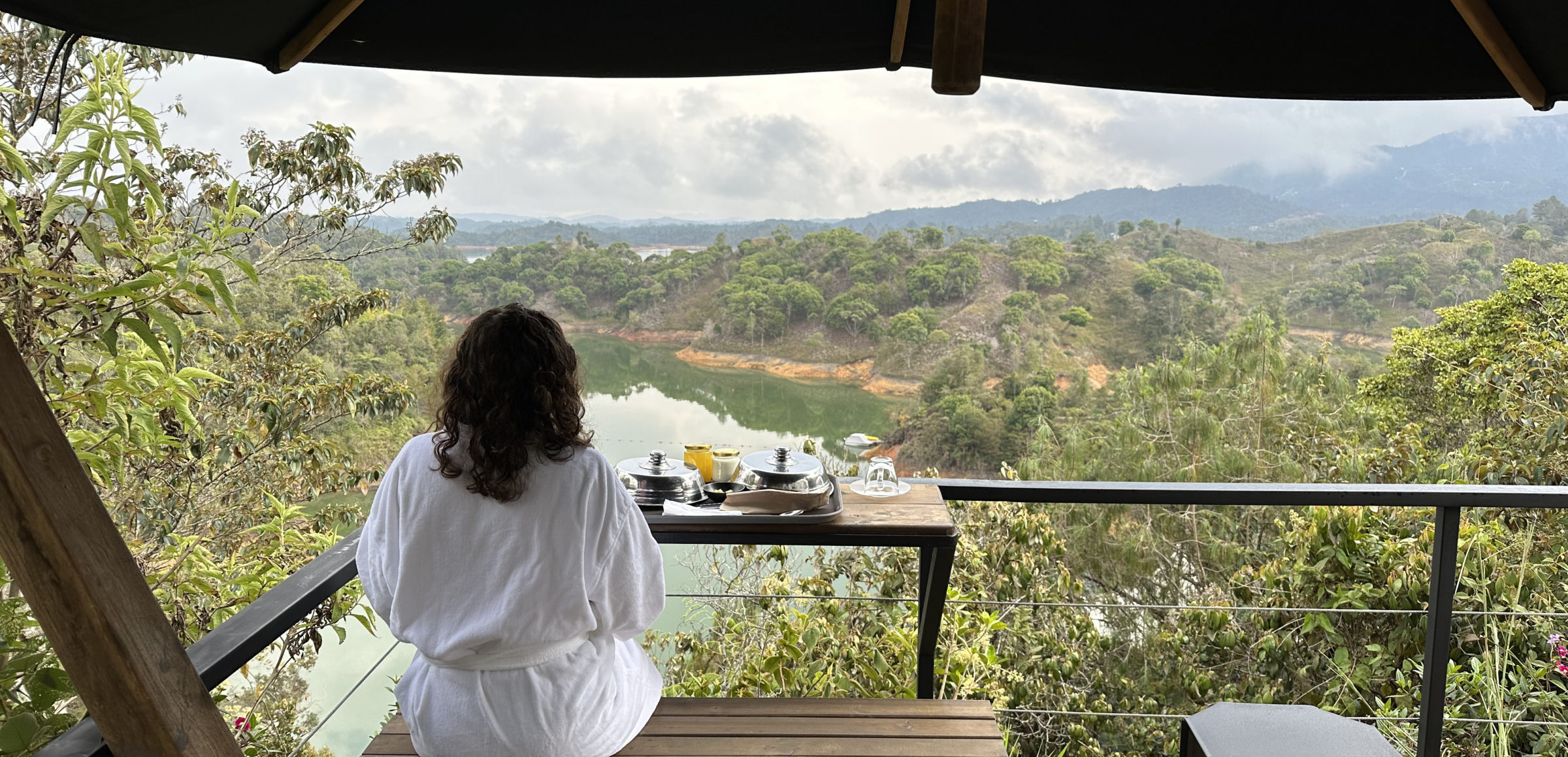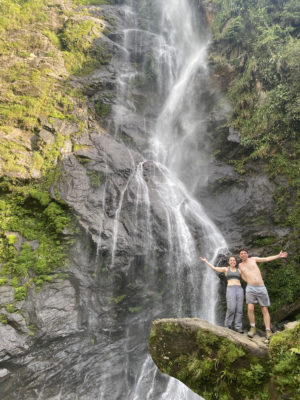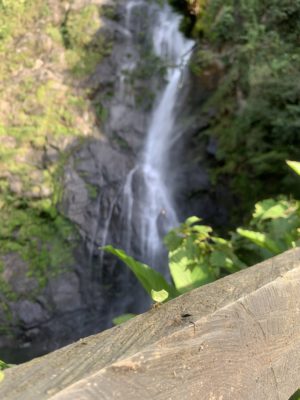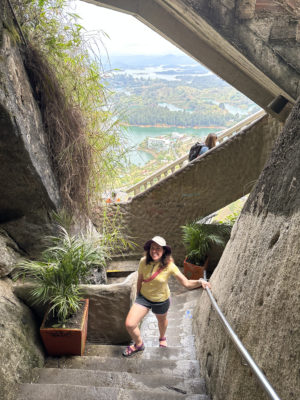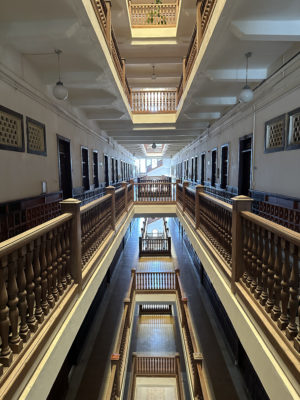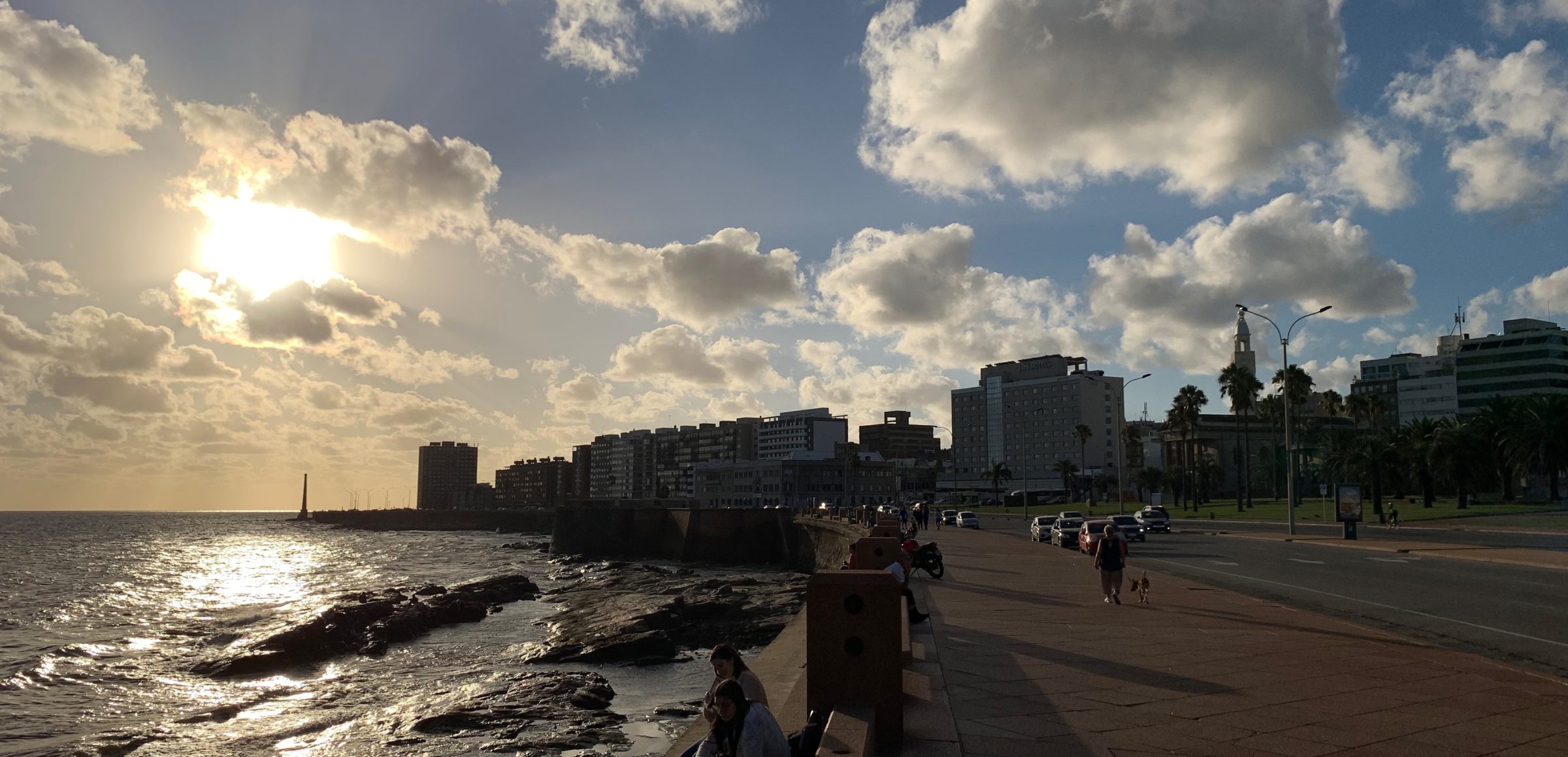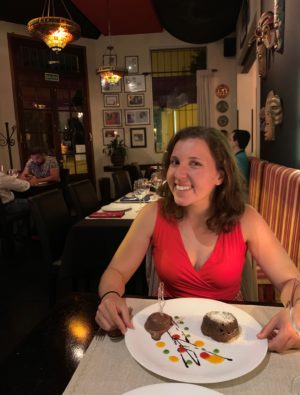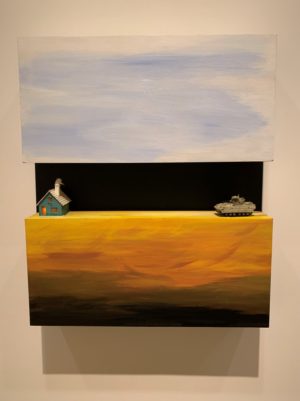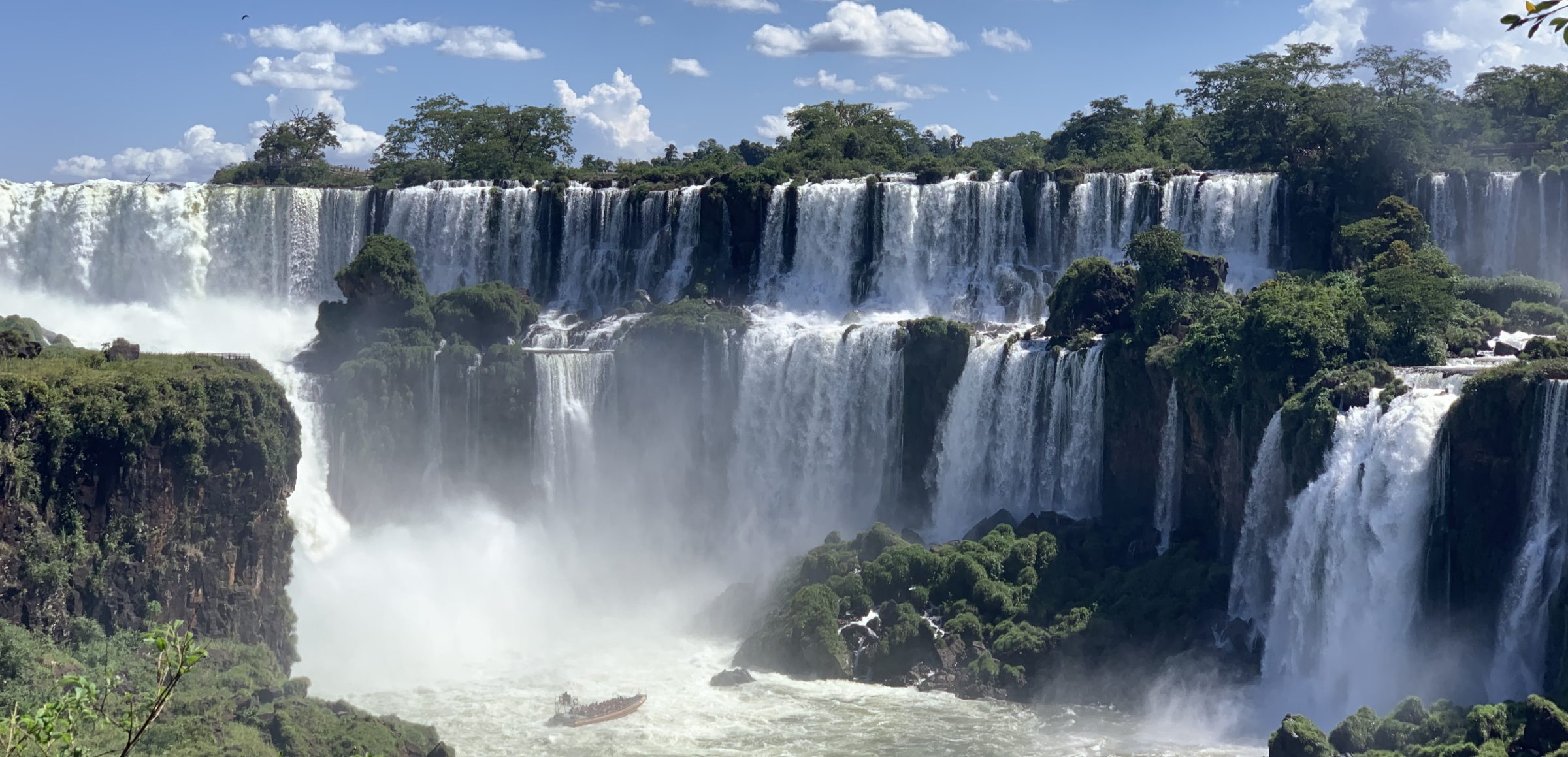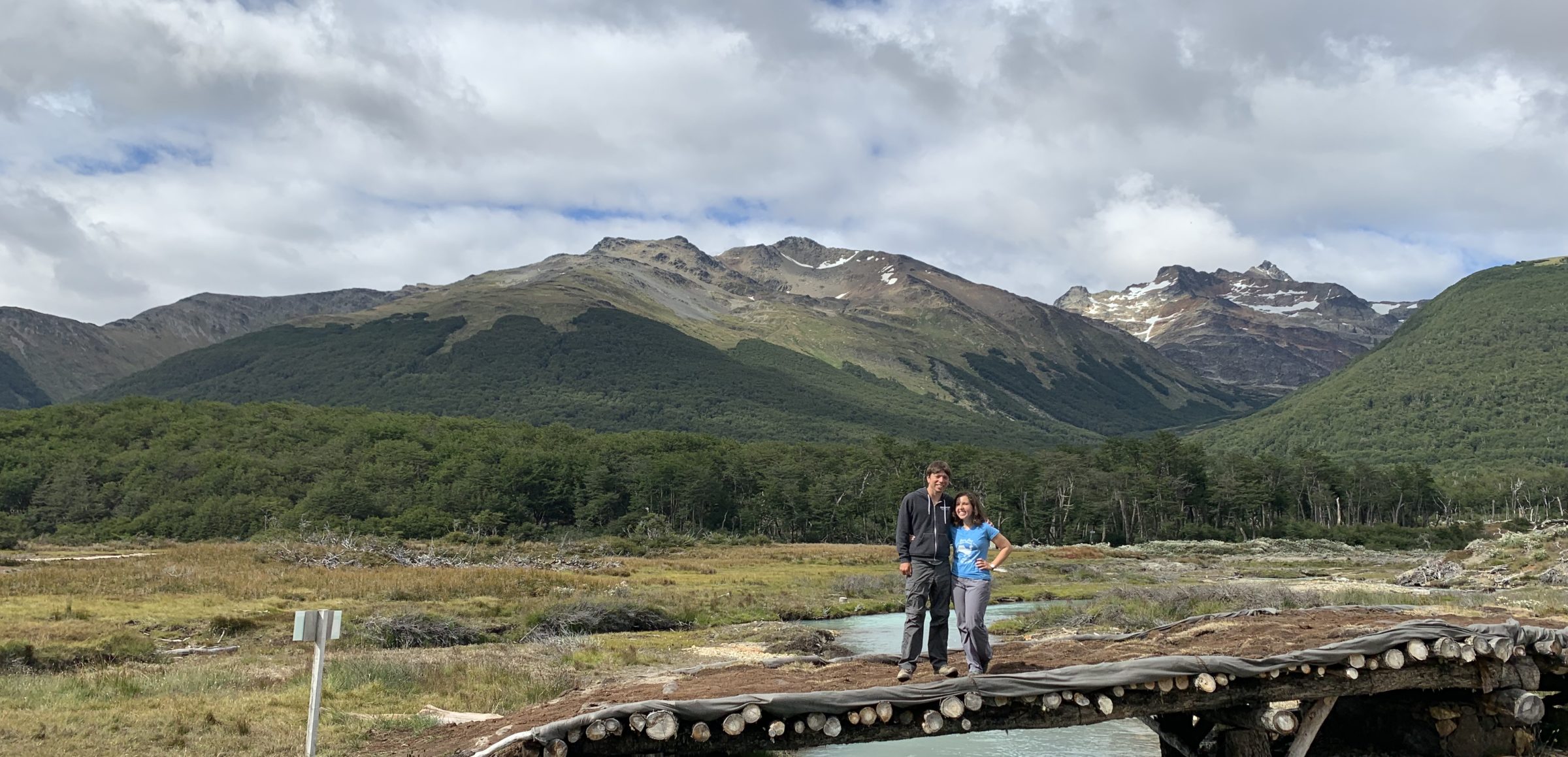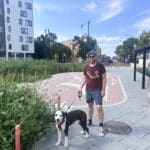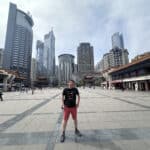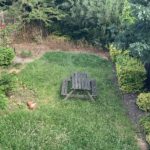We’re back! And in the style of previous travels we’ve brought back from our honeymoon plenty of stories, photos and bug bites 😀
Medellín
Although Medellín is only Colombia’s second-largest city, after Bogotá, it manages to one-up the capital by being the only Colombian city with a metro system. Given this, there are two distinct areas which tourists tend to stay – El Poblado and Laureles – which are both easily accessible via metro but otherwise pretty self-contained. Fortunately, Randi’s colleague Daniela had already steered us towards Laureles which is the more residential and quieter option, although reading beforehand that it was ‘less touristy’ didn’t quite capture the vibe. Laureles has everything a tourist might want – the main strip is filled with bars, restaurants and pandebono – it’s just beautifully green, too, with trees and plants lining every street. The nearest station (Estadio) is more conveniently located than its equivalent in Poblado, being built to serve a large sports complex which hosted the 2010 South American Games. Point being: if you’re trying to decide between staying in Poblado vs. Laureles for a first-time visit to Medellín, we’re officially #teamLaureles.
Wherever you stay, the taxi from the airport will take you through the Túnel de Oriente which is worth calling out in its own right. It’s an 8km road tunnel dug through the mountains, which only opened in 2019, and if you grew up playing the “try to hold your breath until the car leaves the tunnel” game as a child you’re going to be sorely challenged by this one.
After checking-in and doing some light exploring/relaxing we decided to rouse ourselves for an evening trip to Poblado for dinner. This turned out to be an excellent decision – partly because of Randi’s tasty pisco sour with red wine, but also because it helped to shift us onto the right timezone and make the most of our limited nights in Medellín. And the metro itself, you ask? Why, the metro is excellent. It’s easy to use, fast and frequent… but my favourite feature is its impatient opening of the doors to the train before it has fully come to a stop at the station. It’s very efficient!
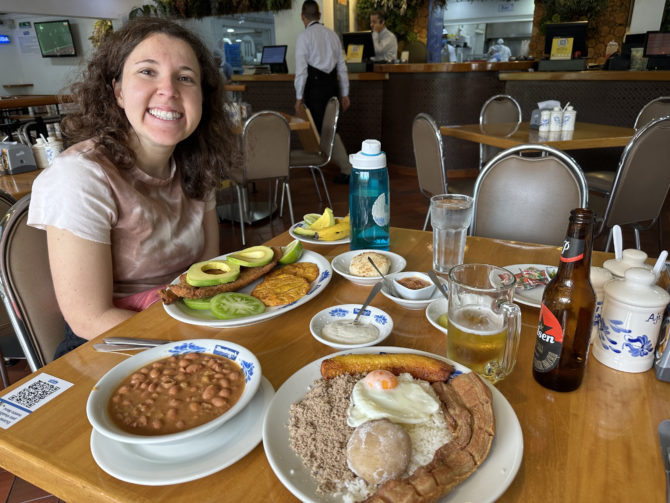
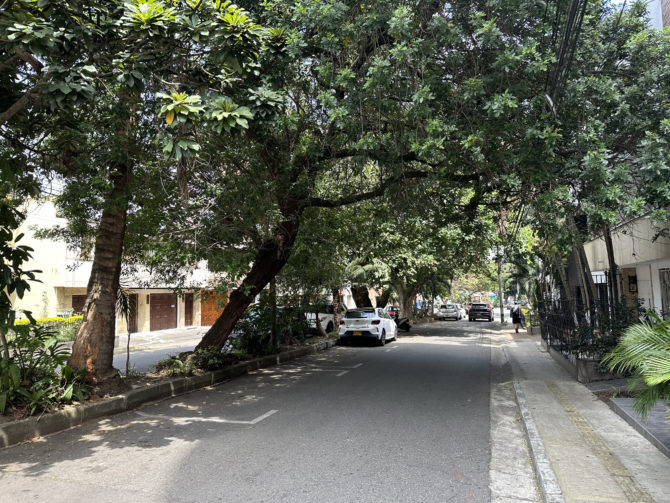
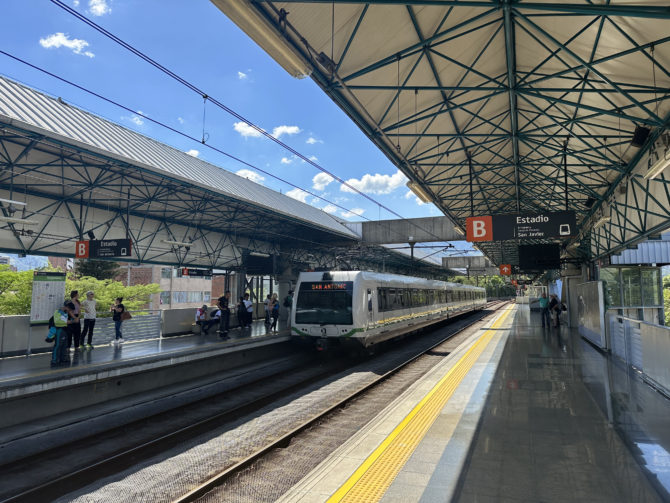
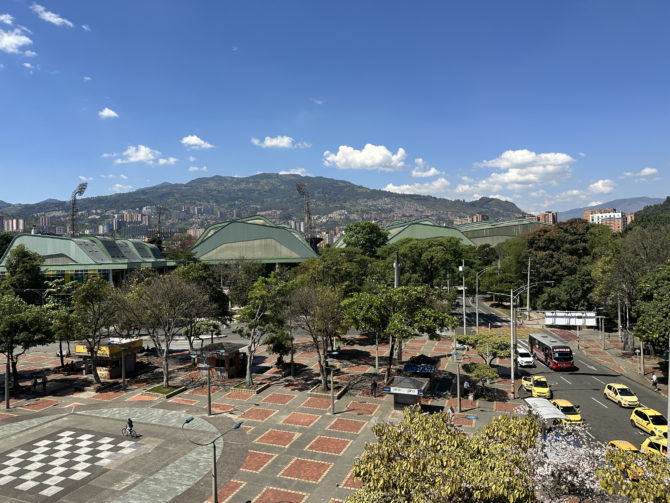
The next day we rode the other direction for a walking tour of ‘comuna 13’ to the west of the city. Whenever a tour is themed around street art you can be sure it belongs to the “this area used to be very poor and dangerous” genre, although this is a relatively extreme case given that the neighbourhood, also known as San Javier, was one of the most violent areas in Colombia during the 80s and 90s thanks to its unenviable position at the centre of the narcotics trade. The turning point came in 2002 with a massive government military operation (Operation Orion) against the guerrilla groups, although the narrative gets a little murky here since the armed helicopters, troops and paramilitary-backed ‘disappearances’ also resulted in hundreds of casualties for local people.
For our tour guide Lara, who was born and raised in the district, you could sense some tension between her intense pride in the area’s subsequent transformation with the ongoing lack of truth and reconciliation following the conflict. There’s a reason why civil wars are the worst. And so, the spirit of hope and optimism is channeled into street art and – quite wonderfully – escalators. As it turns out, one of the major regeneration projects in this (very hilly!) neighbourhood has been the installation of six outdoor escalators, and people absolutely love them. We did too.


Although we didn’t have time for Medellín’s largest park, we did also visit the smaller Cerro Nutibara Pueblito Paisa (complete with a replica Antioquian village at the top) and make a very brief journey into the historic centre to see Plaza Botero (the one with the cheerful statues). We also really enjoyed walking around the sports complex by Estadio – places really do feel different when the climate doesn’t require buildings to have walls – and, on a more prosaic note, walking about our local supermarket thanks to the high-energy Colombian dance music playing in the background. I am not sure this would work in Forest Hill Sainsbury’s, but it’s worth a try.
I did attempt to assemble the necessary ingredients to make tea here, but with all the elements against me – unpleasant tea bags, liquid milk only sold in bags – I just gave up and switched to delicious Colombian coffee instead. At least, I thought it was delicious. Apparently a common tourist complaint is that the coffee in Colombia is not actually that good since all the best stuff is grown for export, but since I’m not normally a coffee drinker I didn’t have much basis for comparison and I enjoyed it.
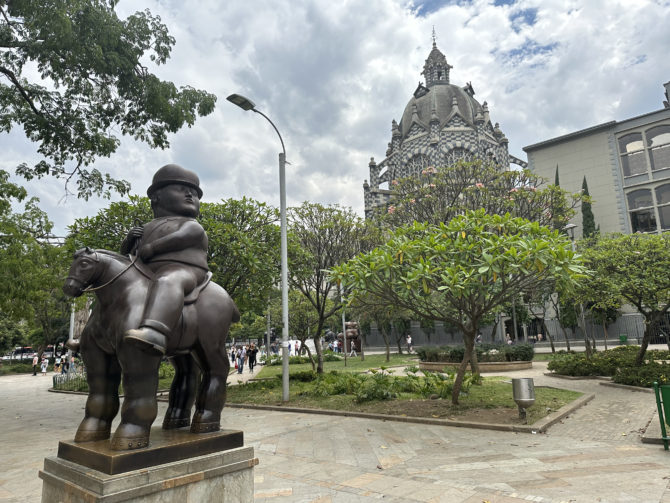
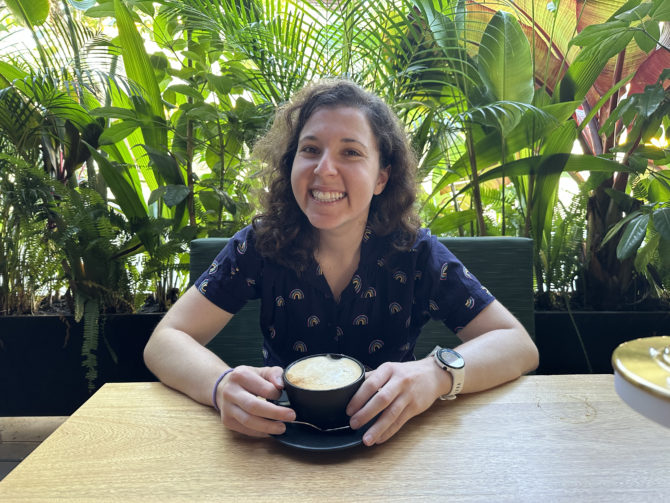
Hiking & Rafting
The next few days were the most active and energetic part of our trip, starting with a two day there-and-back hike through the countryside around Medellín with Expedition Colombia. Our guide, Juan, was fantastic and very tolerant when we became obsessed with trying to take photos of ant trails in an Attenborough style. The walking was satisfying but not especially demanding, alternating between jungle sections and hilly fields where the trees had been cleared for small-scale subsistence farming. We also passed plenty of gold mining in the river (allegedly not the most poisonous kind) and had a couple of breaks each day for swimming, delicious lunches which came wrapped in banana leaves and a trip to the base of a waterfall.
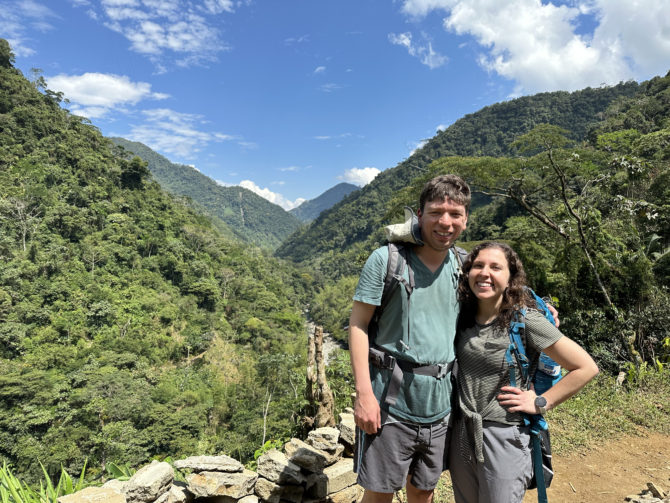

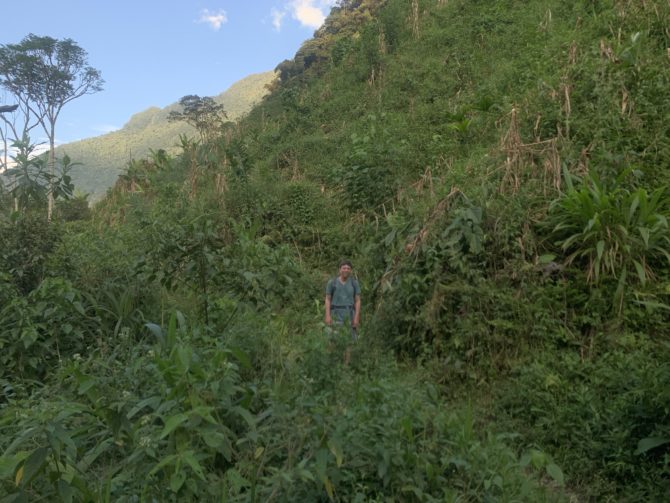
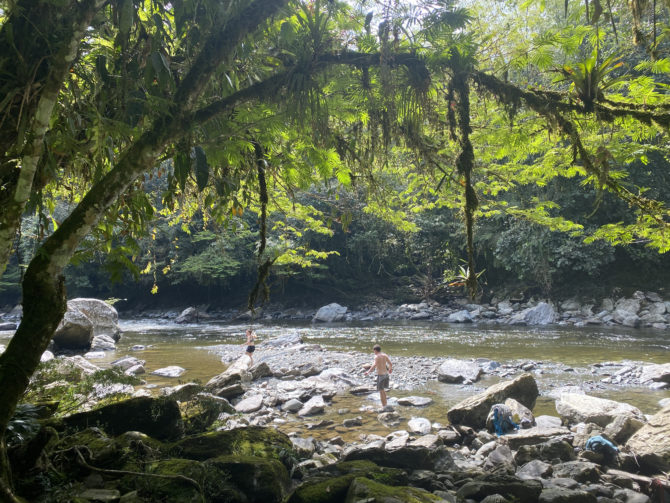
On the journey back we were also joined by a Canadian traveller, Shane, whose enthusiasm for a dead snake was commendable. The previous night we had all debated politics over dinner at our homestay – genuinely one of the tastiest dinners we had over our entire trip, by the way, and that’s a high bar – but amusingly the thud of the rain hitting the metal roof during the thunderstorm meant that we were all effectively shouting at each other despite the discussion not actually being that contentious. Shane’s guide also accompanied us back, together with his latest mule. Having grown up in the same hills we were walking through (he pointed us to his childhood home in the distance) with very little money, it was a truly great day when he earned enough to afford his family’s first mule and no longer had to carry everything through the mountains on foot.
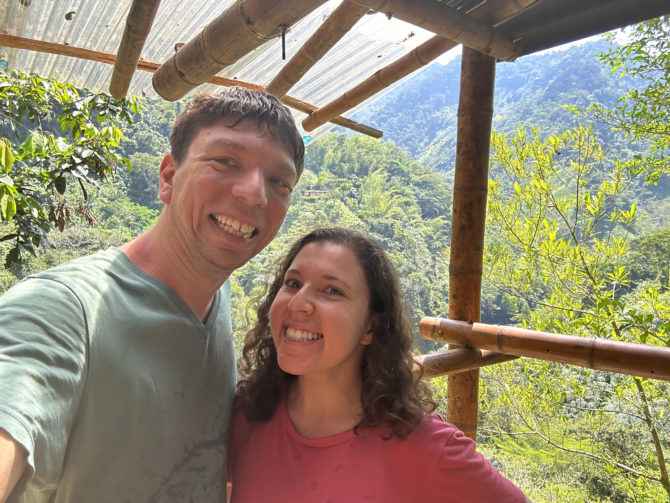
Our next night’s stay was in a truly breathtaking lodge nestled right in the hills and overlooking the river, which also came with its very own pet cat. Again, living in a climate where you don’t have to bother with walls completely changes the type of spaces which become possible, and it was a magical place to sit and read until the sun went down. For the onslaught of winged creatures which made their appearance after the sun went down, the bed also came equipped with a decent mosquito net.

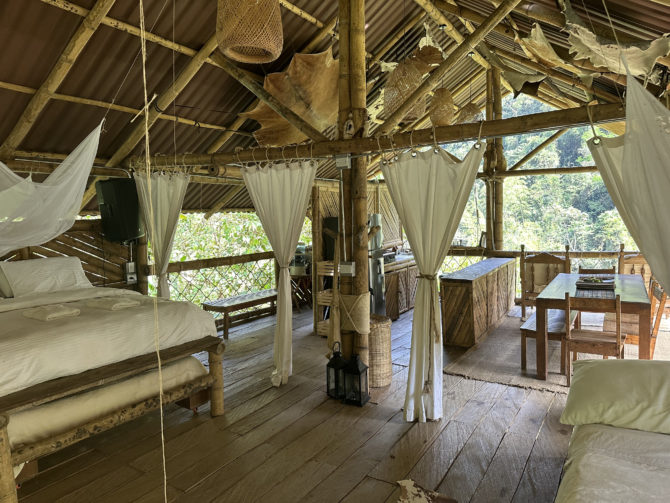
The final day of the action-adventure phase of our honeymoon was rafting down the river rapids, which was incredibly fun. I’m glad that we’ve done rafting before, and hence Randi’s translation of the Spanish safety briefing wasn’t the first time anyone had ever told me what to do if I fell out of a raft. Especially since, later on, I did indeed manage to fall out of the raft! Fortunately Randi impressed everyone else on the boat with her quick reflexes to pull me out again.
To be honest, the experience of being swept along the river was equally enjoyable as rafting down it and during some quieter moments many of us chose to jump in and float anyway. At one point we also stopped to explore a waterfall tucked alongside the riverbank. Our fellow rafters were lovely, including the guys from Aruba who taught us about their home country. I also want to thank Francisco’s relative who gifted me with a waterproof bag a couple of years ago during our Secret Santa in Santiago which proved incredibly useful to hold the hiking boots we needed for the very steep, hour-long descent to the starting point in the first place. During this hike someone else managed to drop their helmet over the cliff which is actually worse than falling out of a raft, right?
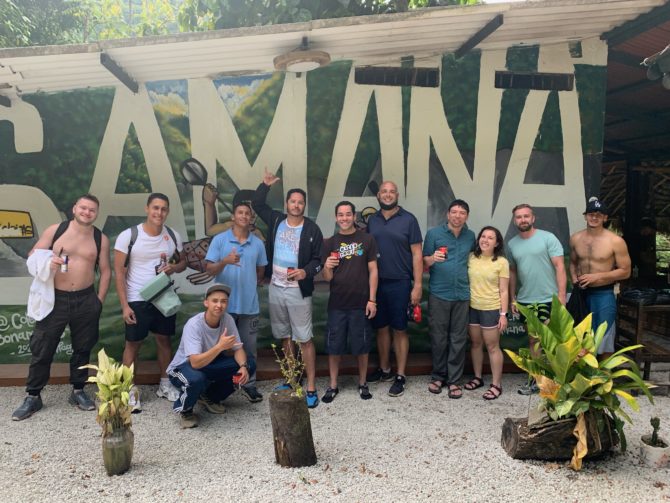
Guatapé
After the rafting, we were driven back to the Expedition Colombia offices – where we briefly became impromptu guests at an English lesson for staff and local teenagers – before a further two-hour drive to our next destination, Guatapé. Although our driver was great, Randi’s baseline assumption when being driven along mountain roads at night is that we’re all going to die, so when we successfully arrived at Bosko both (a) alive and (b) just in time to order dinner before the kitchen closed, it was in a mood of wild exhilaration.
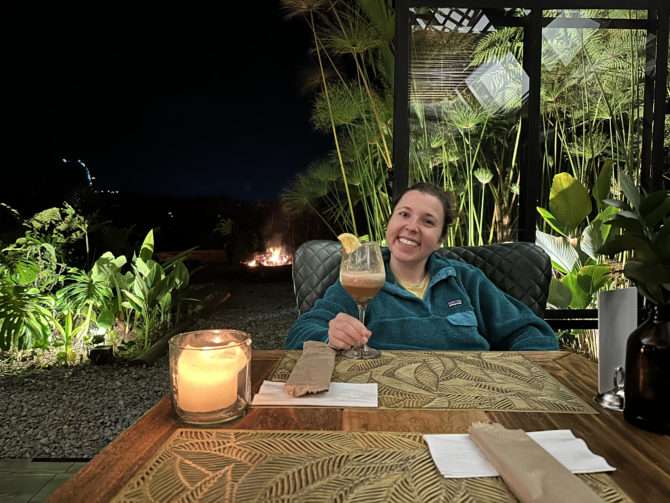
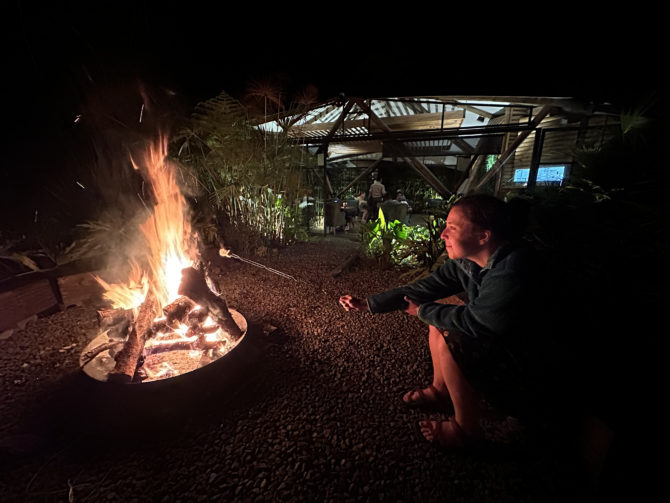
Bosko describes itself as a “luxury glamping hotel” and, for someone who was really looking forward to several days of uninterrupted holiday reading, the set-up was absolutely perfect. Everyone has their own private dome located off a little private path. (Our dome was a crystal dome, giving us amazing views from our heated bed plus a very confused bird who arrived every morning to peck at the glass.) There were also Sky Pools (great for reading), an outdoor seating area where truly exceptional meals are served (also great for reading) and private terraces if you prefer room service instead (even more reading). The centre of Guatapé is easily within reach – just a 20 minute stroll – without impinging on the luxury of Bosko’s aura of calm. I loved this place. A fair chunk of my 2023 annual review of books will be thanks to Bosko.
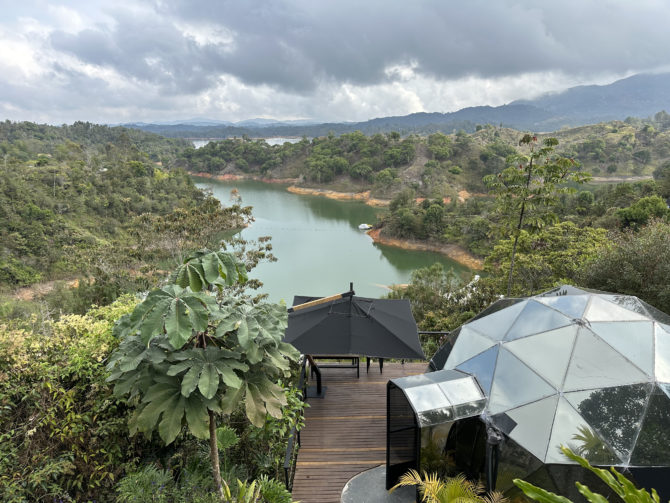
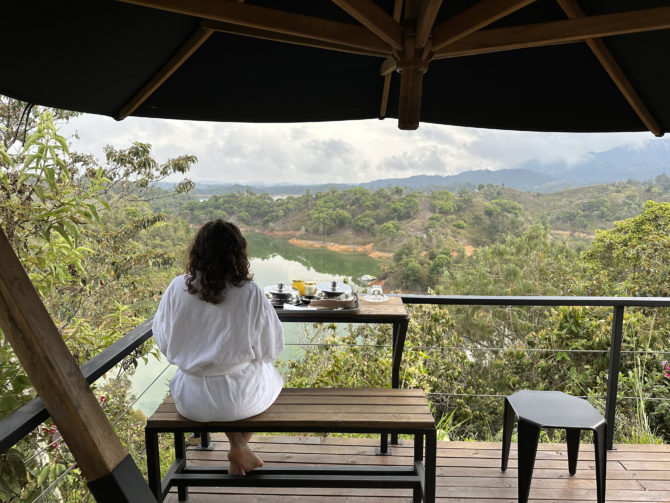
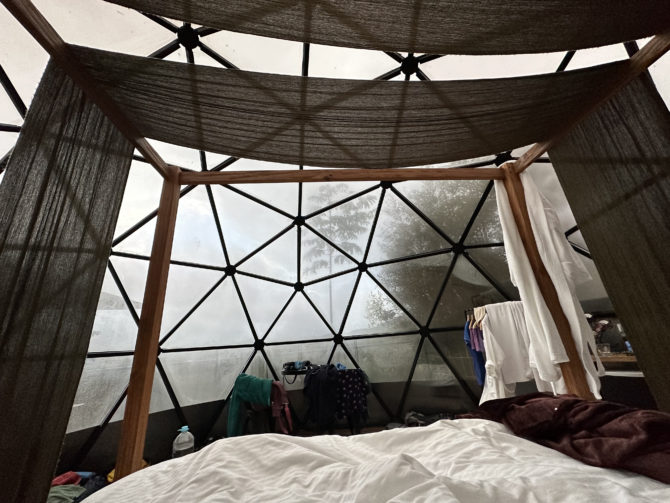
Guatapé itself is a very pretty town and major tourist destination thanks in part to its colourful street art and decorated buildings. We enjoyed some excellent lunches here! The other thing you’re meant to do is climb the steps of El Peñón de Guatapé which we tackled earlyish one morning before it got hot. I have to say, this is probably the best-run “climb to the top of something tall” tourist attraction I’ve ever seen in my life. There are first aid stations at the top, bottom and halfway up – with defibrillators! – plus segregated up and down routes so you don’t have to negotiate a crowd in both directions. Waiting at the top is not merely a nice view but also multiple shops, stalls and seats. It all tricked me into thinking that this must be more of a challenge than it actually is, but we’re actually only talking about 659 steps here. Good job, whoever is in charge.




Finally, a stay at Bosko also comes with use of their kayak, so Randi and I took this for a spin one morning and ended up challenging each other to a couple of timed buoy-to-buoy races. So, for posterity, here is where I will record that Randi won the first slalom 1:36.42 to 2:13.72 (that’s what happens if you keep overshooting the final buoy) but I clawed back a victory 44.90 to 52.40 on the second sprint. And we left it at that, because “best of three” is not a good approach for a honeymoon. (Very happy to go back for another stay and rematch, though.)
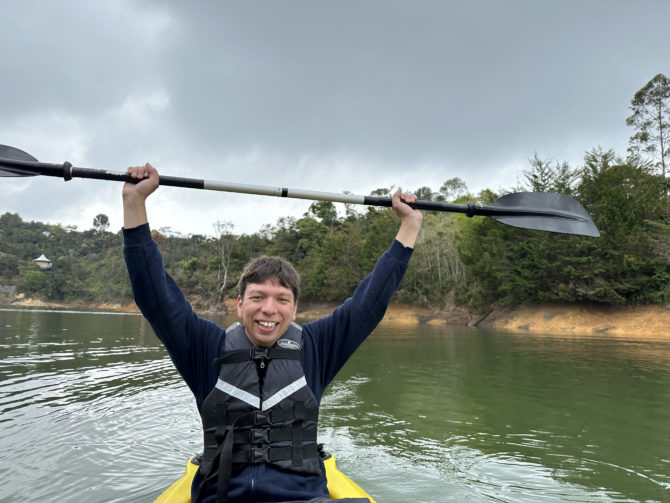
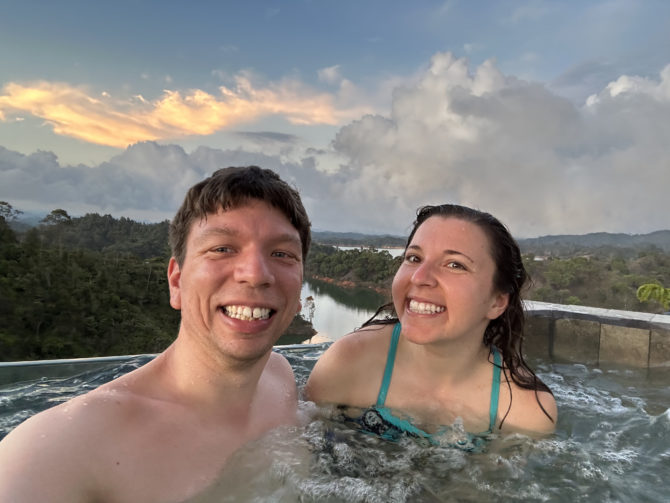
Cartagena
For the next stage of our holiday we flew to Cartagena, a walled city on the Caribbean coast with a very different vibe to the other parts of Colombia we’d seen. I roll my eyes when tourists start critiquing areas for being “too touristy” (as if their own tourism doesn’t count) but the the tourism in Cartagena certainly has a very different feel to Medellín or Guatapé. In part, that’s just because there’s significantly more English-speaking as opposed to Spanish. Elsewhere we got the sense that most people were coming from other parts of Colombia or South America, whereas Cartagena is – in part – catering for cruise ships of (predominantly American) visitors. As such, there’s also more pushy street selling of drinks, hats or horse-drawn carriage rides – those rides often being accompanied by groups of men running alongside and offering their services to rap at you.
It’s not the worst place for this stuff by a long way – it was just noticeably less chill, and I was frankly relieved to discover that the hats were a front for drugs because I was finding it difficult to believe that there were any uncovered heads left in the city to market to. All in all, I’m glad we went here – and the colonial-era streets are indeed lovely to walk around! – but I’m also glad this wasn’t our introduction to Colombia.
The best part about our visit to Cartagena was the discovery that Randi’s family friends Brianna and Drew happened to be in town at the very same time. We joined forces on a walking tour (appreciating our guide’s patriotic support for Miss Colombia – apparently not a niche thing, as we also found a photo of each year’s winner on careful display in one of the central plazas) and later reunited for dinner together that evening which was super fun. The second best thing in Cartagena was the pandebono shop just down the street from our wonderfully located Airbnb. Here we found not just savoury but sweet pastry options, with ‘pastel chocolate’ and ‘pastel arequipe’ (dulche de leche) quickly becoming my favourite things.
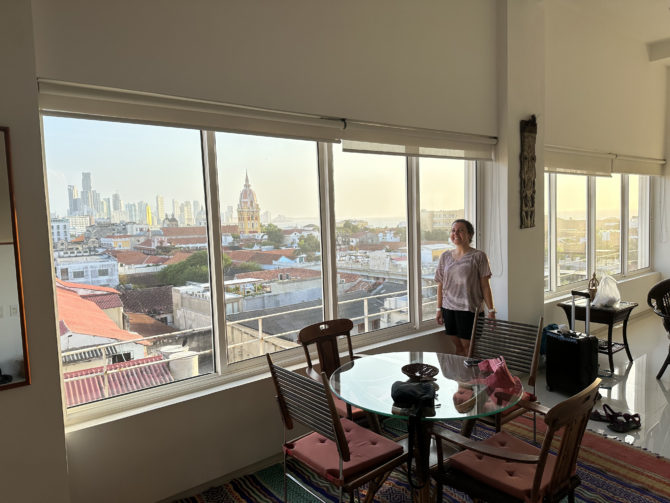
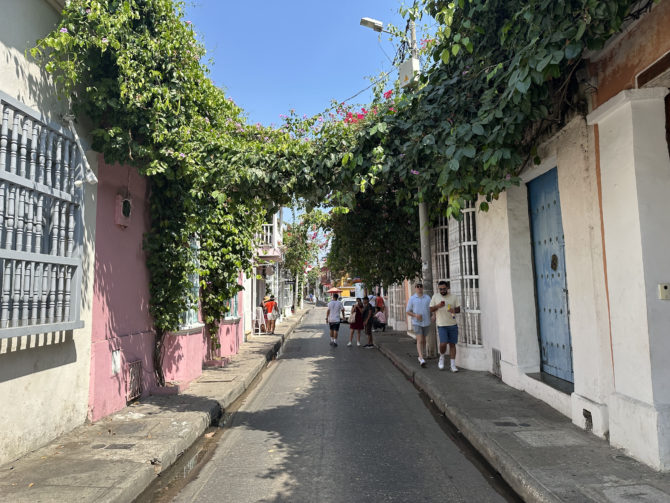
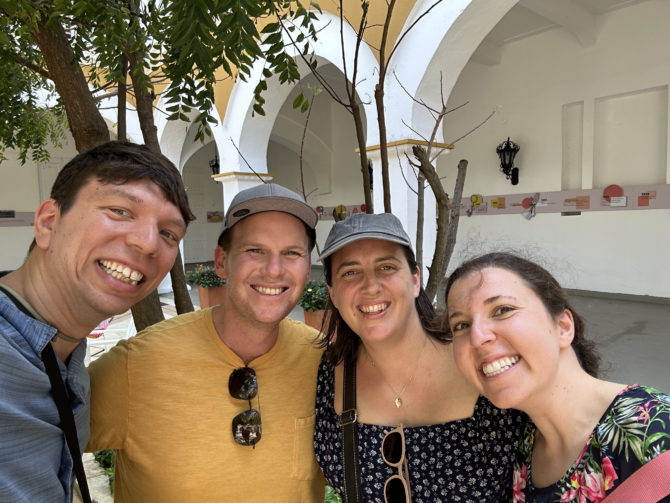
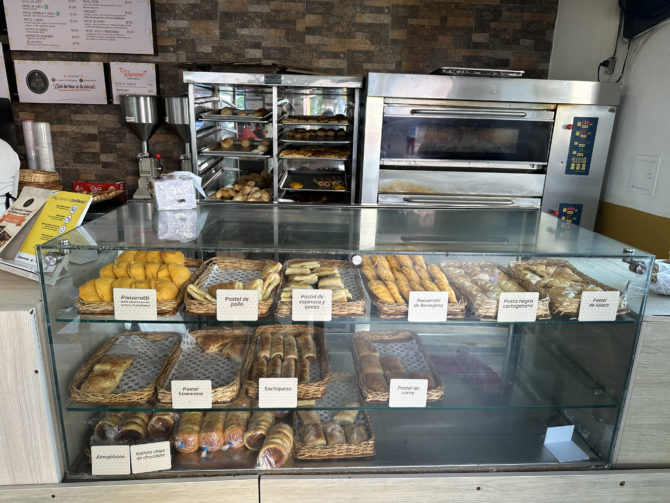
But rather than spending the rest of our trip within the walled city, we decided to pack our small backpacks and take a holiday-within-a-holiday for two nights on the largest of Colombia’s Rosario Islands, Isla Grande…
Isla Grande
The boat ride to the island takes about an hour, and we stepped straight off the dock into our home for the next few days: Hotel Isla del Sol. This is a totally self-contained little world with its own beach area and swimming pool, catering to day-trippers as well as those staying overnight, and we really enjoyed the daily rhythm by which a new crowd of people would arrive mid-morning, fill up the place with activity for a few hours and then depart on the afternoon boat back to Cartagena, leaving the relatively small number of us with overnight rooms to enjoy a peaceful, “summer camp after summer is over” vibe. We swam, lounged in our hammocks and enjoyed our all-inclusive dinners sheltered from the evening winds.
Oh, and Randi and I also got an hour-long massage. This is only the second professional massage I’ve ever had, and the first which didn’t turn out to be the rather more brutal Thai variety. So, at the risk of sounding too obvious, it was incredibly relaxing and wonderful and I did not want it to end.

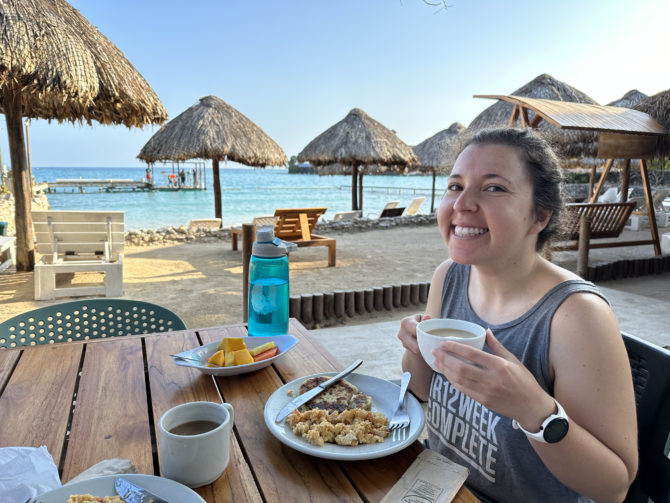
Talking of Thailand: for no particularly good reason we expected Isla Grande itself to be similar to the island of Koh Lipe, but there’s actually a lot less development. We did wander out from our resort a few times to explore (and find a larger beach) but aside from the other hotels scattered along the seafront the rest of the island seemed to be pretty rural, with homes and villages connected by quiet, sandy paths and routes through the forest which we hoped were largely snake-free. This isn’t a complaint – in fact, some quiet beach time was the whole attraction of Isla Grande over Cartagena. Just picture it as a simple place within a National Park, not a resort with bars and restaurants.
And bonus points for our boat ride home, which detoured through more of the archipelago so we could see some of the mangrove forests before speeding back to Cartagena!

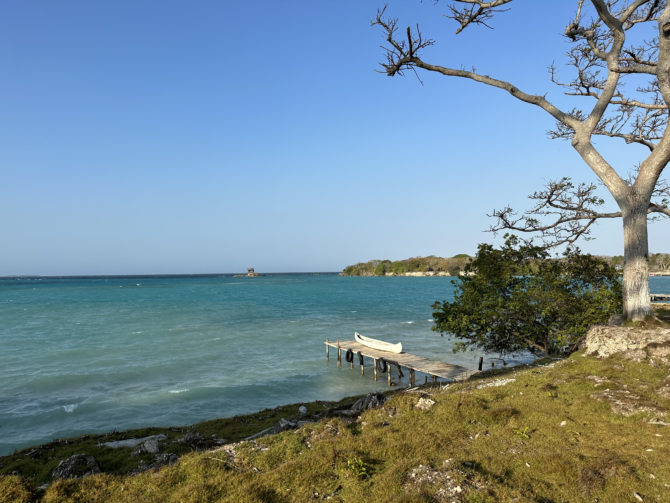

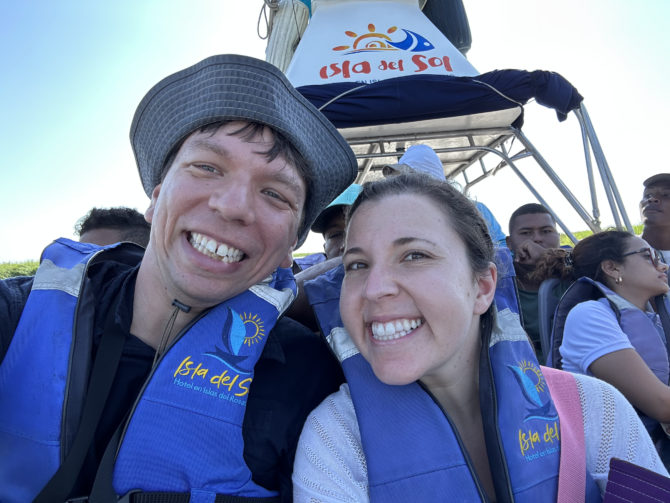
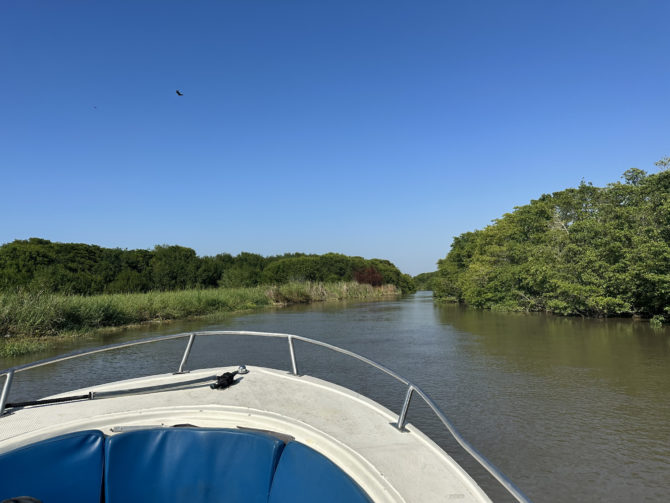
Summing Up
Why did we pick Colombia for our honeymoon in the first place? Partly it was inspired by our previous travels elsewhere in South America. It’s a continent we both love and is particularly special to Randi as a place where she can practise Spanish. But we also wanted to explore somewhere new, and Colombia seemed to have a little bit of everything we collectively wanted: cool cities, hiking trails, mountains for Randi and beaches for me. After booking our flights we mostly forgot about doing much planning in the hectic pre-wedding phase, but everyone who’d already been to Colombia was so positive about the country (“the best place I’ve ever visited”) and helped us out with a ton of great recommendations and suggestions. Thank you!
Basically, I’m just here to tell you that people are right about Colombia. We had such a wonderful time and – as you can hopefully see from the abundance of photos – a decent variety of exploration and relaxation. I am curious to see Bogotá, although I’m holding out for their own metro system to open (projected date at time of writing: 2028).
For our final night back in Cartagena we did go out for a moderately-expensive fancy meal, which had cool vibes and decor but food-wise was actually nowhere near as enjoyable as our final lunch in town the next day at a small Peruvian place. (“When ordering this drink, comment that you want to live your sensory experience” it noted on the English-side of the menu beneath the chicha morada. I have no idea what this means. But the sensory experience of our lunch was top notch.) And then we reluctantly flew home, with the disappointment at being back in the real world leavened a little by being able to take the Elizabeth Line home from Heathrow. We will miss you, Colombia.
Postscript
I love my laptop. I deliberately splashed out on something expensive back in 2018 and it has served me well ever since, even travelling all over South America and South East Asia with us so that I could blog as we went. The only compromise I made at the time was not paying for as much storage as I could, which finally came to a head when I got back from Colombia with a bunch more photos and videos plus – very excitingly! – the professional video footage from our wedding ready to download. So I was very proud of myself when I realised that for less than £100 I could acquire both a bigger SSD and the right size of fiddly screwdriver to upgrade it myself. Thank you, instructional YouTube videos! Now my trusty companion has space for many, many more adventures to come…
We reached a new country! Perhaps not entirely legally, but… we’ll get to that. Welcome to Montevideo, the capital of Uruguay.
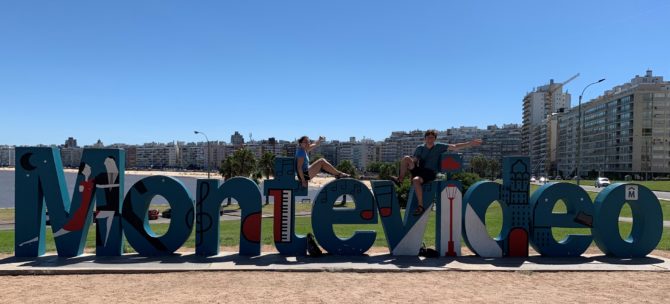
I had built up a whole picture of Montevideo in my head inspired by a couple of offhand comments from Francisco about Uruguay being rich and prosperous. This had magnified in my mind until the city turned into Argentina’s Monaco: a super-wealthy enclave where wealthy people keep their yachts. This is not accurate, which is probably a good thing for the people who live here and definitely for our wallets. It’s perfectly nice, and a bit on the pricey side, but it’s not glitzy.
We arrived to Montevideo from Buenos Aires by ferry on Sunday. Well, actually we arrived at a place called Colonia and then hopped on a coach for several hours since this is substantially cheaper than taking the ferry the whole way. By the time we had settled into our Airbnb and strolled down La Rambla into the historic old town we discovered that almost everything here on a Sunday is very, very shut. This isn’t a complaint – I kinda admire it – but it’s a clear contrast with Buenos Aires and gives some of idea of Montevideo’s quieter character.
Walking down La Rambla is absolutely wonderful, by the way. Wikipedia claims it’s the longest continuous pavement in the world, albeit hedged with a ‘citation needed’ flag. Regardless, it’s 22km along the coast, smells of the sea and is filled with people sitting and drinking mate from thermos flasks. We tried this back in Ushuaia and it wasn’t our cup of mate, but it’s nice to have a shared drink that the country enjoys together. As it happens, I woke up this morning to discover that a new mate emoji is on the way so organising your social drinking on La Rambla is about to get even easier.
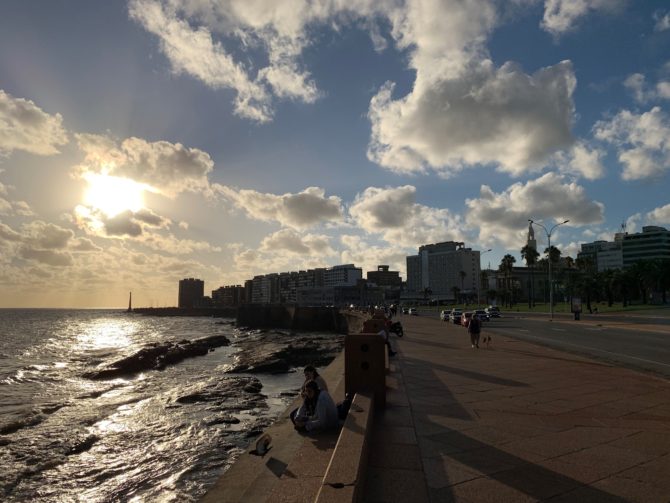
After having dinner at one of the very few open restaurants in the old city we were surprised to find a negative charge on the receipt labelled “DESCUENTO Ley 17934” (DISCOUNT Law 17934). Some puzzled googling revealed that this was an automatic VAT refund paid to holders of foreign cards. I know that VAT can theoretically be claimed back by visitors in most countries but have never met anyone who actually bothers to do it, so this was a welcome surprise. It does feels slightly weird to be paying 18% less than the advertised price which a local person would pay, and presumably the system is open to some abuse. But the discount is automatically applied, so we’ll take it!
Talking of laws: after we went through immigration in Buenos Aires and got our exit stamp from Argentina, the woman at the immigration desk gestured vaguely for us to “go to gate 8”. This perplexed us since there is no gate 8 at the port, and only later did I realise that she was talking about another immigration desk for us to get our entry stamp for Uruguay. So, on Monday morning – disturbed at the idea of being held or fined when we tried to leave again – we trudged on down to the government migration office to sort it out. After Randi explained our problem in suitably contrite Spanish the woman at the desk confirmed that we were “not in the system” but was perfectly happy to blame Argentina for the mistake and claimed we wouldn’t have a problem leaving. As I finish writing this on the ferry back to Buenos Aires I am happy to confirm that she was correct.
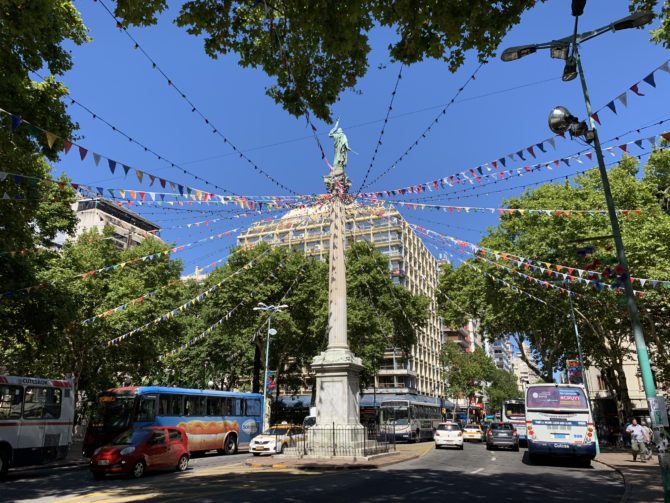
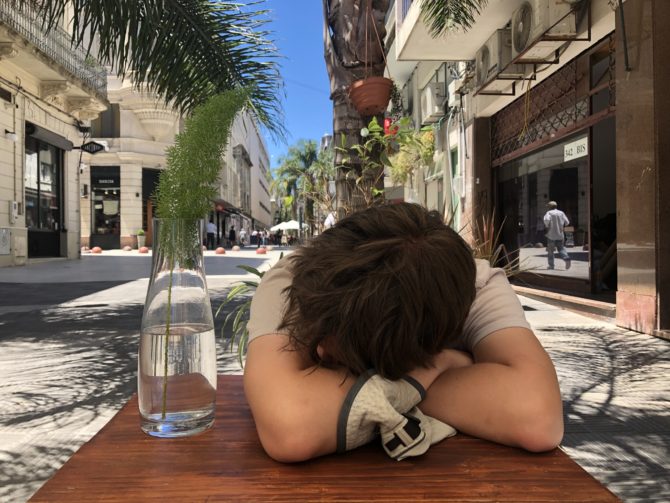
All of these laws like “give foreigners a discount” and “don’t be too harsh on tourists without entry stamps” have to come from somewhere, and specifically from the General Assembly of Uruguay. After failing to tour the Congress in Buenos Aires we made a special effort to visit the legislature here, and pestered our guide with questions about the legislative process and the electoral system when she was clearly more practised talking about the paintings. (The paintings are fine. One of them shows the British acting as mediators between Uruguay, Brazil and Argentina – we’d never get that gig today.) We did establish that when the House of Representatives deadlocks with the Senate they convene a general assembly together and vote as one body, which seems smart.
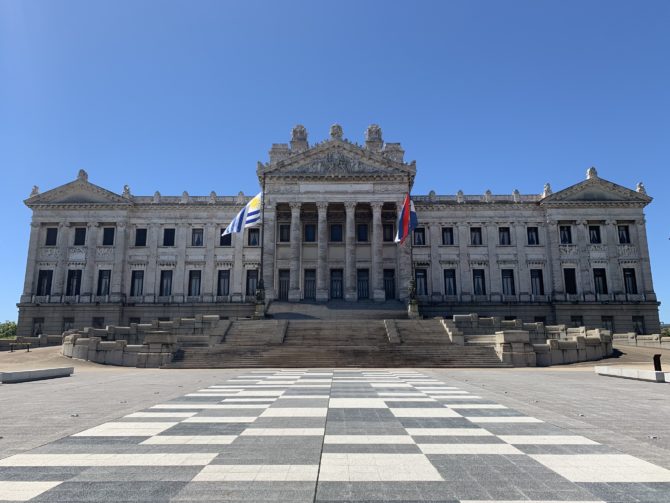
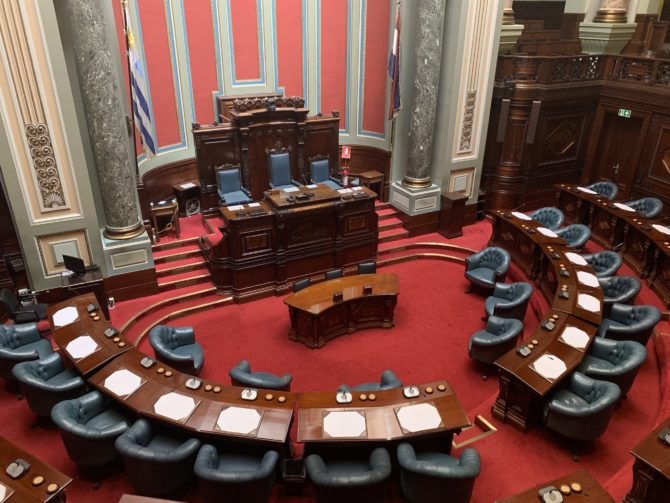

Back in Puerto Varas in Chile, one month ago, we decided that we would mark each month’s travelling anniversary with a fancier, more expensive dinner than we would normally allow ourselves. Back then we really enjoyed our food and sangria at
El Humedal but in retrospect it was nothing compared to the incredible meal we had at Restaurante Tandory in Montevideo for month two. It’s a small, atmospheric restaurant – the kind of place where the chef came over to talk to us halfway through our meal – and my chicken mole was absolutely amazing. Wherever we are in a month’s time will find it very difficult to top this.
On our last full day in Montevideo we wandered up La Rambla in the other direction to the beachy part of town before coming back in the evening for dinner, cocktails and jazz. Not glitzy, but cosy. The tone changed a bit in the last 24 hours since our Airbnb had a few challenges… Randi does a better job at enumerating the full list of issues, but suffice to say that leaving this morning (without a shower as the water was out) felt like a great escape. I’m very excited about showering again in the warm embrace of Buenos Aires before we leave tomorrow for approximately 700 hours of flying until we reach Singapore.
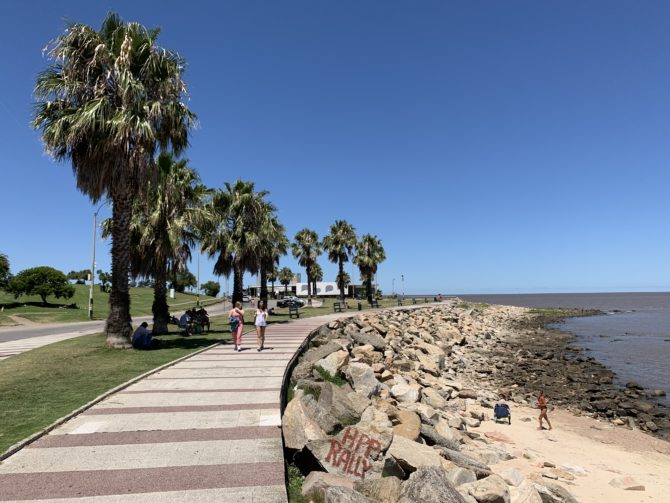
Asia, here we come!
Just as with Santiago, it’s much more difficult to write about visiting a big city than somewhere small. We’ve now stayed in two different neighbourhoods of Buenos Aires – first in Palermo, now in Almagro – and we still feel that we can’t quite put our finger on the city since there is so much of it to see and explore. We’ve been comparing Buenos Aires to Santiago a lot, actually – sorry, Lima, but you need a real subway to participate in this game – and Santiago actually felt more compact even though it is statistically much larger. This is probably just a quirk of urban boundaries plus our own idiosyncrasies in where we went. But the two cities certainly have a very different feel.
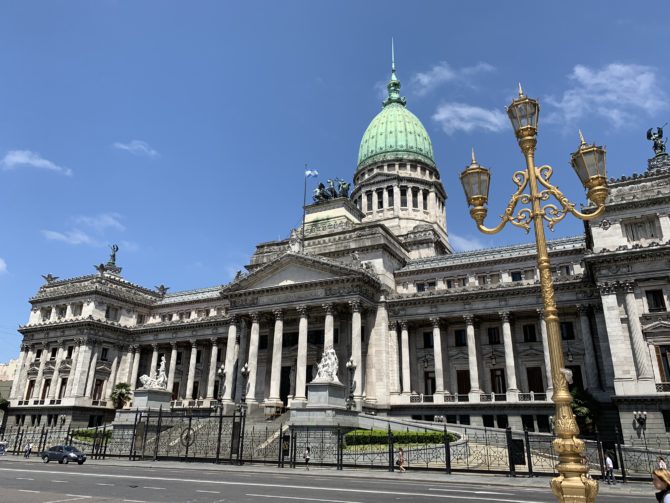
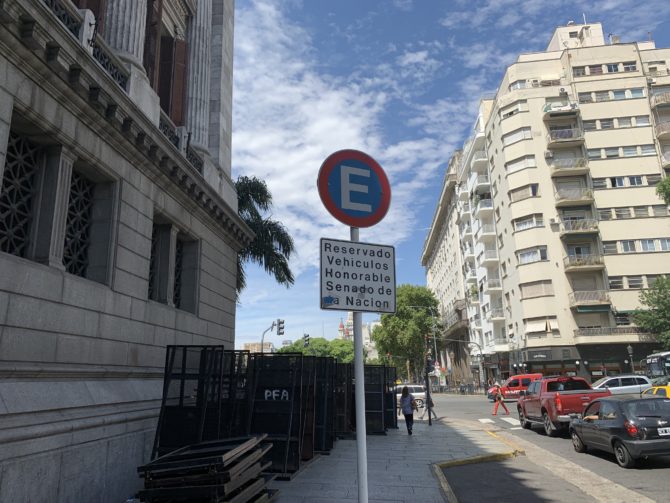

We flew into the smaller city airport rather than the big international one so it was a quick ride to our first Airbnb through the large Parque Tres de Febrero which includes a planetarium, lakes and rose gardens. (The guy on the plane next to me was just starting the ginormous paperback sequel to a fantasy novel, The Name of the Wind, which I was simultaneously finishing in svelte Kindle form. We bonded over how amazing its fantasy world is, and I was grateful that his edition was in Spanish so I wouldn’t be tempted to look across and read spoilers too easily.)
Our home was close by to the free Botanical Garden, which we enjoyed wandering through, and the ‘Ecoparque‘ (“the historic Buenos Aires Zoo… re-opened as an interactive eco-park, improving animals’ standards of living, and offering visitors a more educational and fulfilling experience”) which is home to a terrifying genetically engineered kangaroo/rabbit hybrid which we first spotted at night and thought had escaped from a lab. Further discussion with Katie suggests that they are actually patagonian mara, a “relatively large” rodent.
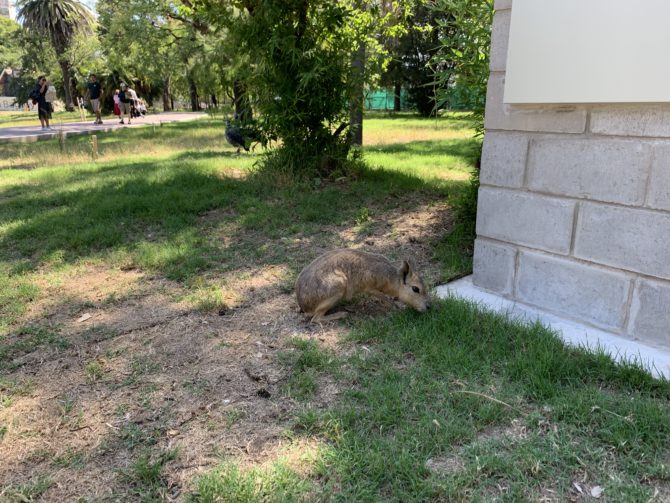
Us being us we obviously took a walking tour which meandered from Congress to the Casa Rosada (Pink House) where the President works. I’m sure this is a minority opinion but I am always more interested in seeing the inside of legislatures rather than executive buildings. Passing laws is very distinctive looking; presidenting just requires desks, sofas and maybe a podium. Unfortunately we tried twice to get a tour inside Congress and failed both times as they kept pushing back the date for the building to re-open and laughed at our earnestness. So, no Argentinian lawmaking action for this blog I’m afraid.
We also visited the famous Recoleta Cemetery – some very elaborate graves but overall not quite as beautiful as the grassier cemetery in Punta Arenas – as well as the Fine Arts Museum nearby, which had a reasonably high ratio of ‘art I enjoy for a bit’ to ‘art I can’t really bring myself to like’. They also had a special Turner exhibition which was almost in the dark to prevent you from damaging the paintings by being able to see them.
And yes, of course we went to see tango. We chose a relatively inexpensive tango show and were pleasantly surprised to discover that they didn’t gouge you on drinks to make up for it. Randi had to double-check that the wine prices listed were actually for bottles and not glasses. Suitably reassured, we enjoyed the performance although at times it was a bit… odd. Mostly it purported to tell a down-on-their-luck tale of American immigrants, but then abruptly cut to Eva Perón standing on the balcony of the Casa Rosada singing Don’t Cry For Me Argentina. As the music swelled and the LED screen switched to a fluttering Argentinian flag, one man in the audience was so overcome with patriotic fervour that he stood up and started shouting “ARGENTINA!” as the crowd applauded. I thought we had drifted a little from the tango theme.
Afterwards we walked a short distance to the casino – past a nice view of the Woman’s Bridge at night – and attempted to use our 200 peso “free credit” from the tango company. We are not really casino people and this all got very confusing (imagine us both sitting at machines, randomly pressing buttons and trying to work out if we had actually spent any money yet) but we did get bags of free (and delicious) sweet popcorn out of the experience before riding the bus home after our only ‘late-night’ in Buenos Aires somewhere around 1am.
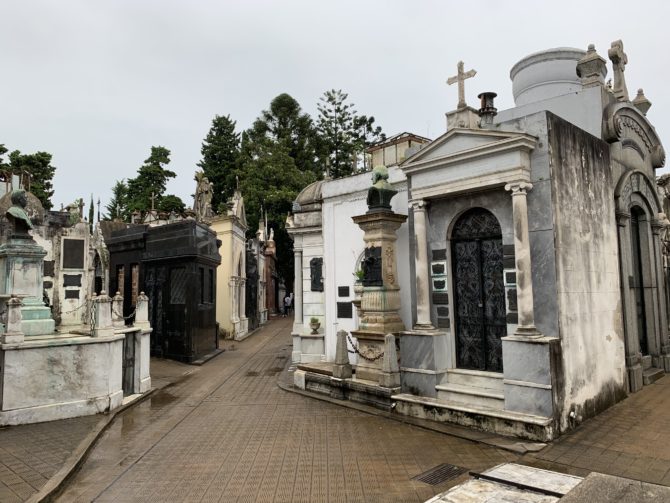

Again, as you already know, we’re not really nightlife people. So I’m going to use that story as a bridge not to talk about the bars and clubs of Buenos Aires but something much more important: the transport! As already mentioned, Buenos Aires does have a subway and it seems to be a pretty extensive and decent system. For whatever reason we didn’t end up using it a huge amount and relied more on the huge network of buses.
I can’t decide whether the buses in Buenos Aires are inspired or insane. The ‘system’ is actually a hive of independent companies doing their own thing. They have managed to get everyone onto one unified smartcard system (the SUBE card) which is great, although you still have to tell the driver where you’re going which seems to alter the fare only very slightly. The variation in fares seems small enough that a flat rate would make everyone’s lives a lot easier. The buses are very frequent – they don’t run to schedules, just “every X minutes” – and are incredibly popular, with lots of redundancy between routes.
So that’s all great, only there are a few problems. The bus stops themselves are a random assortment of shelters and lampposts, with no consistency in how route numbers are displayed between different companies. And the buses don’t seem all that keen on actually stopping at the bus stops… sometimes you have to really throw yourself in its path and hope for the best. But worst of all are the letters. You see, many routes actually have multiple variants (e.g. the 160A, 160B, 160C and so on) and these can go all over the place. There are no maps at the bus stops to show you the differences and the letters themselves are barely visible on the actual buses, so all of your effort to hail the bus in the first place may be in vain if you board and then discover that, oh no, this may be an 160 but it isn’t the 160 which goes anywhere near where you want to go.
There’s room for improvement, that’s all I’m saying.
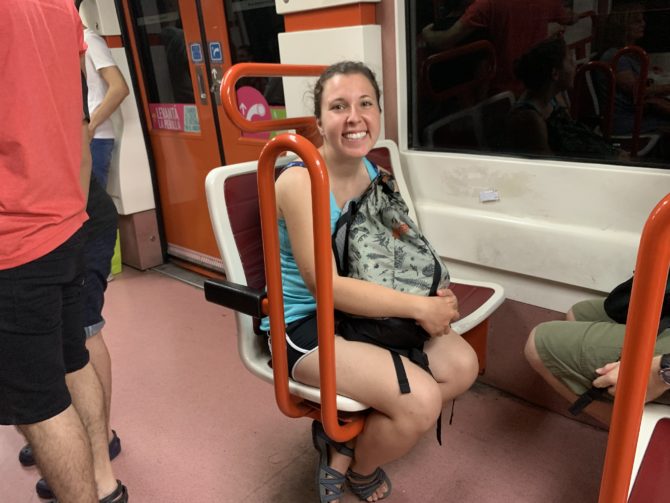
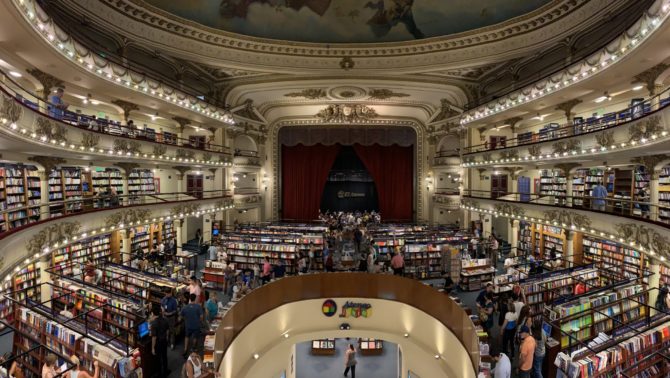
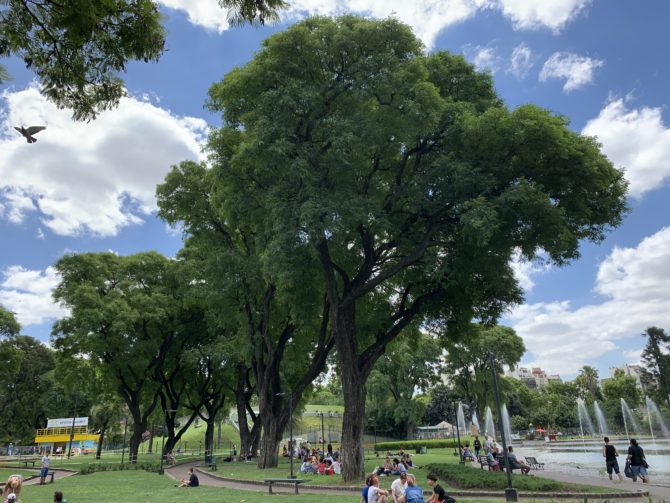
The other thing to mention about Buenos Aires is the food, and this is definitely an area where the city wins out over Santiago: you can eat a lot more variety of great meals for less money. We’ve had drinks at the famous Café Tortoni, enjoyed chorizo sausages from one of the many parrilla, found our favourite burger joint, eaten at Mexican, Indian and Armenian restaurants and had even had one last hurrah of Peruvian food from a place intent on serving gigantic portions. Hey, even the random dude in the park selling chocolate brownies produced some of the tastiest brownies we could remember. You won’t be disappointed with the food in Buenos Aires.
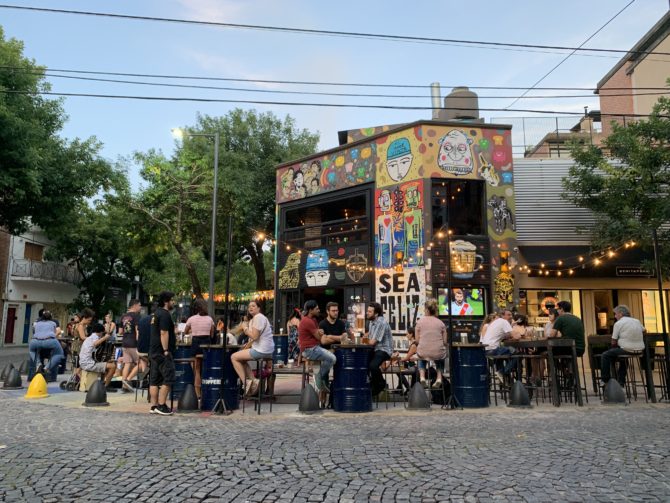
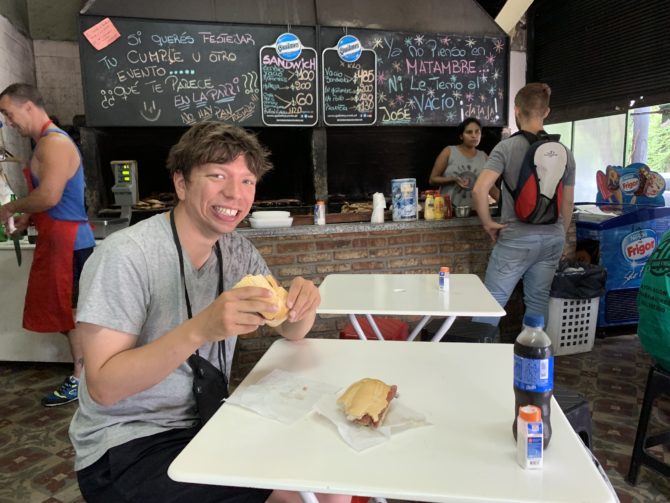
Of course, there is no reason to force any comparison between Santiago and Buenos Aires at all, other than it’s useful for us when we’re reflecting on the cities we’ve seen on our travels. I can totally see why Buenos Aires is so popular: there’s a lot here, and while at times the weather has been very hot and humid we’ve still managed to get around easily to see a lot of it. At the same time, the most common thing I’ve heard about Buenos Aires in casual conversation is that it’s a very “European city” – which, if you’re visiting from Europe, raises the question of why you would fly across the Atlantic to get here. It’s probably best combined with some uniquely South American nature – which is why I’m glad we used Buenos Aires as a base for our break to Iguazú when we did.
Tomorrow we will be leaving to spend a few days in Montevideo, the capital of Uruguay, before heading back to Buenos Aires very briefly and then wrapping up the South American leg of our trip!
Now for a little jump forward in time. After leaving Ushuaia we spent the rest of last week in Buenos Aires, but I thought I would save all of my Buenos Aires material for one post and write first about our side-quest to Puerto Iguazú and the Iguazú Falls. This was a wonderful diversion but not a place gifted with excellent WiFi – or at least we ran out of things to order in different cafés to keep testing the connection speeds – so now there is some blogging catch-up to do.
Ethical note: this post was made possible courtesy of my mother who generously provided our flights to Iguazú. All opinions about my mother are my own.
OK, so we hadn’t originally planned to visit Iguazú since it wasn’t really on our path – in fact, it’s possible we explicitly told our vaccination nurse that we weren’t coming here to get out of something or other – but we kept picking up the recommendation that it would be worth the detour. The area around the falls is shared by Brazil (Iguaçu National Park) and Argentina (Iguazú National Park) although the general consensus online is that the Argentinian side has the edge. Either way, we weren’t about to pay $160 to get Randi into Brazil (equivalent cost for a British citizen: £0) so we spent two days in Argentina’s National Park.
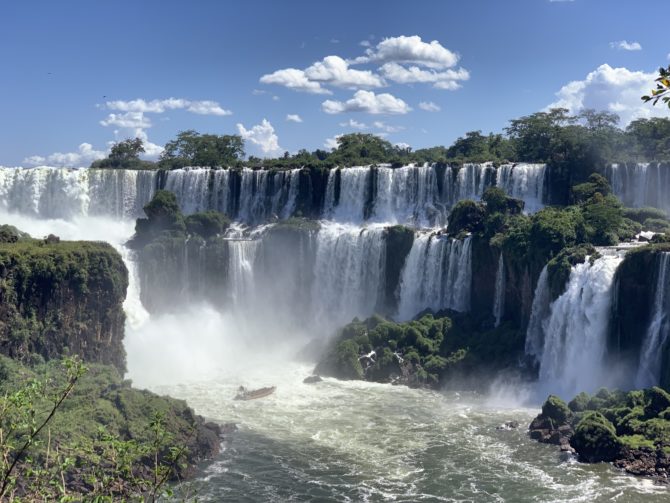
The park is extremely well sign-posted and organised with almost a theme-park vibe (in a good way… such as having a brightly colour-coded map) although it does get rather crowded at the most popular points. On our first day we had planned to walk the Garganta del Diablo Trail – the famous ‘Devil’s Throat’ – and the Upper Circuit, because this is what various blogs told us we could comfortably manage in a day. The blogs are wrong. All of the trails are very easy to walk and despite not arriving particularly early we still had plenty of time and energy left to walk the Lower Circuit before the park closed. Don’t believe anything you read on the internet.
The Upper Circuit was probably our favourite, but the Devil’s Throat is certainly spectacular and (whisper it) maybe more impressive than Niagara Falls. I mean, I haven’t seen Niagara in the summer and I don’t want to hurt its feelings, so let’s just agree that they are both great and you should definitely visit. We also had a magical burst of fake-rain water spray while we stood at the top which was cool and refreshing.

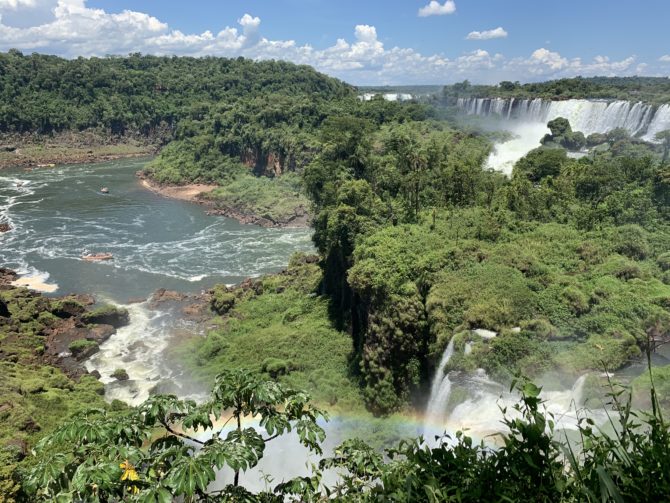
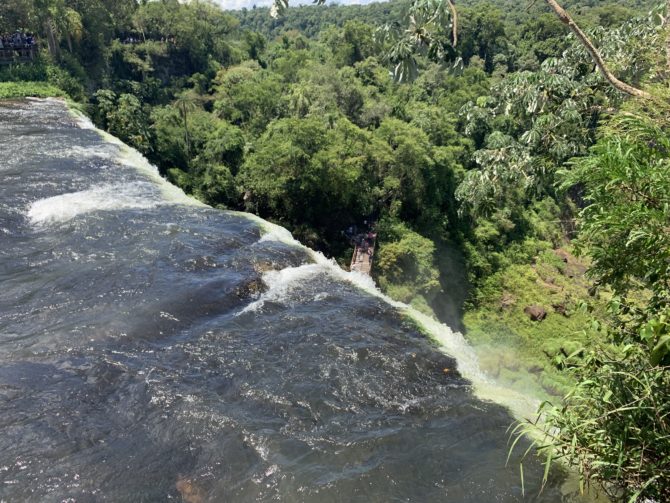
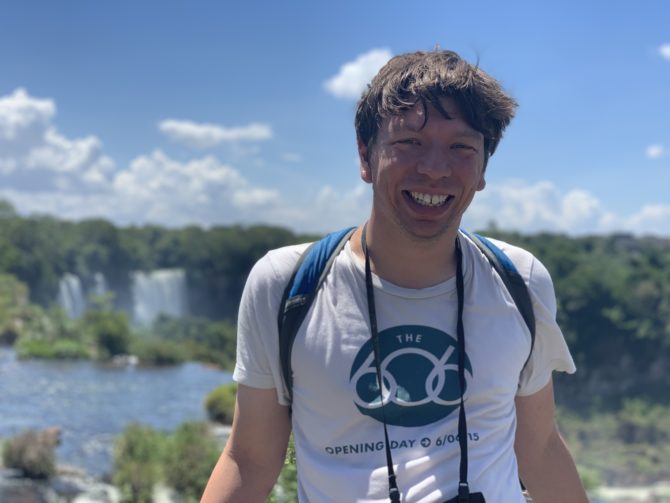

On the second day (for which you get a 50% discount to re-enter the park) we used gift money from Randi’s aunt to take the Great Adventure tour through a jungle path and then up to the falls in a boat. The highlight of the jungle was seeing a mother and baby bird cunningly disguised as the top of a tree stump – so cunning, in fact, that I almost missed it. We were less smitten with all of the giant spiders who hung above the jeep as we stopped to talk about how impressive their webs were. And Randi was not thrilled to learn that the area is home to 50 species of snake, of which only a mere 10 are venomous. I thought those were good odds.
But no one pays for this tour to marvel at the Earth’s precious and endangered species, obviously. They do it to be taken under the waterfalls at high speed and get completely drenched, which was a lot of fun.

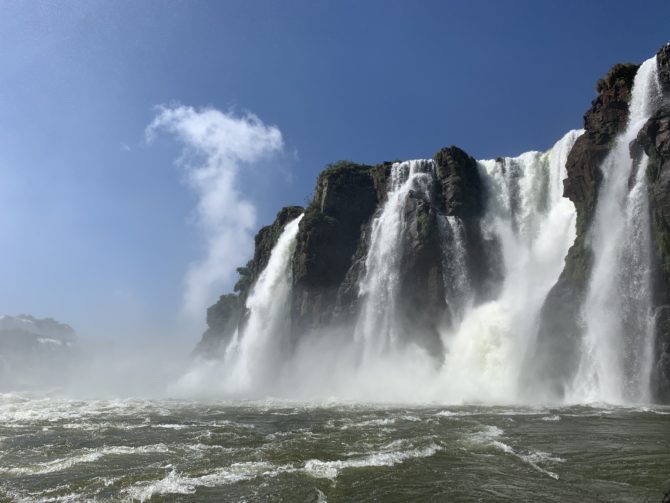
To dry off we walked the markedly less popular Macuco Trail where we saw our first monkeys of the trip. From what I remember of Asia they will become much less of a novelty, but we enjoyed seeing them in the trees. I have more mixed feelings about the coati which run amok in some areas of the park and particularly where innocent humans are trying to eat lunch. These raccoon-like animals are cute…ish, but they do have sharp teeth and claws and when they think a sandwich might be worth a-stealing they go crazy. I even had one poking around my legs as we set off on one of the little internal trains which take you between various points in the park.
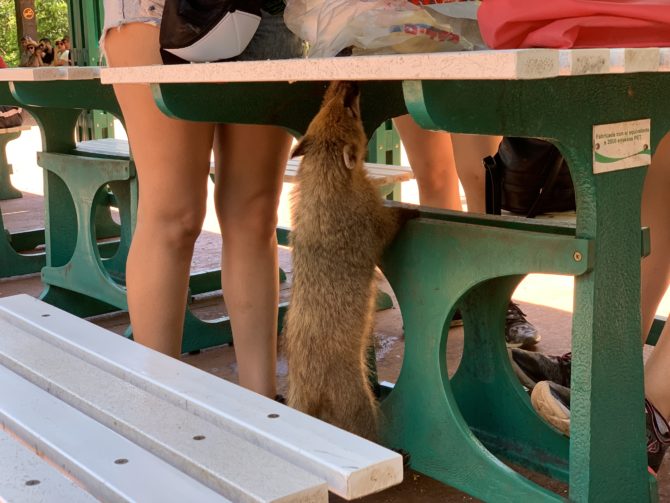
Other than the Falls the other big tourist attraction in Iguazú is the Triple Frontera between Argentina, Brazil and Paraguay. Each country is represented by an obelisk which looks out at the others across the Iguazú and Paraná rivers and it’s an interesting test of how much effort each country is willing to put into its respective side, like neighbours who share a hedge. The Argentinian area is pretty nice – busy but relaxed, with great-smelling sausages being cooked. Brazil have built a big Ferris wheel in their area but have also gone and grown a big tree which obscures half of their obelisk so I’m deducting points for that. Paraguay… didn’t seem to have anyone at their station. (Maybe they were there and I just couldn’t see them!)
One problem with this whole arrangement: my phone kept thinking it was in Brazil and jumping one hour ahead to their timezone. This feels like a whole new category of first-world problems but it wasn’t something I ever thought about, and I bet the product managers who built the ‘Set Automatically’ toggle didn’t think about it either.
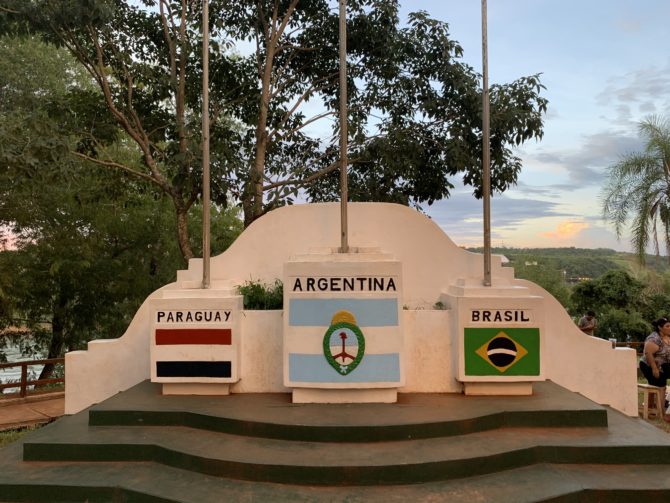
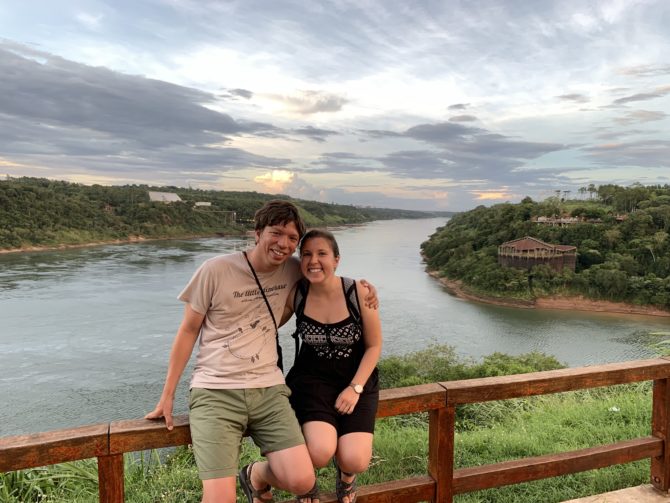
One final note about Puerto Iguazú itself: the area around our Airbnb has gone completely overboard in naming streets after significant dates. It is genuinely possible to walk up 17th October, turn right onto 25th May, make a left onto the main street of 9th July before turning again onto 1st May. This is silly. Then again, the town is home to numerous buffet-type restaurants where you can load up a plate for very little money, so I won’t hold it against them too much.
Welcome to another episode of “blogging from cafés in remote places with decent WiFi”. Today’s edition is from Ushuaia on the southern tip of Argentina, where the city’s motto is “end of the world, beginning of everything” and the claim is to be the southernmost city in the world. This is apparently somewhat contested by a Chilean town further south, but the marketing ploy has clearly worked because we’re here and not there.

We have mostly laid low during our couple of days here, relaxing and reading at our comfy AirBnb and petting its resident dog Kobe (at least, I think that’s his name) whose lack of barking and jumping puts him in the highest echelon of dogs on this trip so far. The most popular thing for tourists to do here is to see the penguins on Martillo Island, but we decided to leave the penguin-watching to David Attenborough and opted for a cheaper (i.e. free, excluding the lift there and back from our AirBnb host) hike to Laguna Esmeralda instead.
Fun fact: on the drive out of Ushuaia we went through a police checkpoint where – in an excellent use of public resources – they asked our host where we were going and then sped us on our way. The hike itself was a very gentle stroll through the countryside compared to anything on Torres del Paine, although we did encounter more mud before we arrived at our picnic destination:
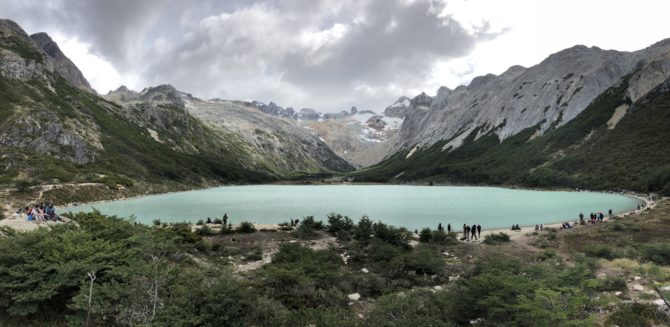
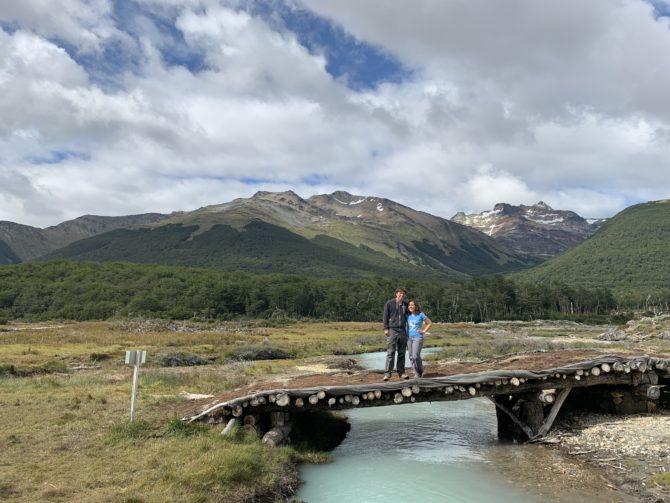
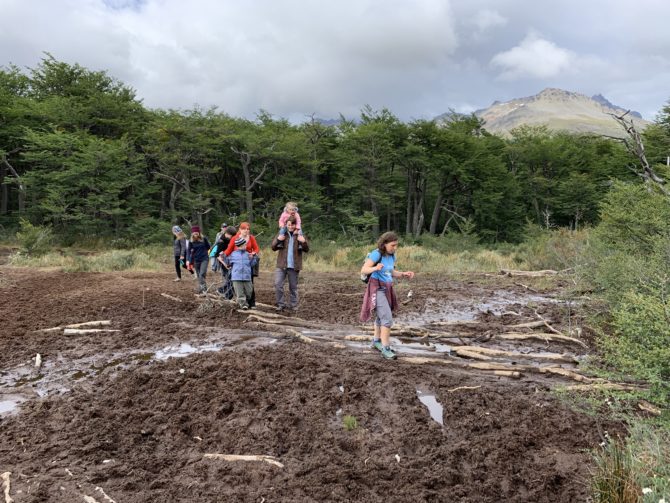
In town we also made ourselves at home at a local pizza/empanada/ ‘all-round good food served cheaply and cheerfully over a counter’ kinda place. I think we went there three times in total, to the extent that they had to warn us that they close on Tuesdays. I also thought it was interesting that our host had Argentina’s civil code as a book on her shelf (is that a common thing to have lying around, like a dictionary?) but unfortunately my Spanish wasn’t really good enough to go into the difference between civil and common law systems and so I just flicked through.
Oh, and one of Ushuaia’s public parks is also home to the worst wooden slats in the entire world. It made the sort of haunted house creaking noises you usually only find in a horror film and we are quite convinced that it is supposed to be closed but someone has run off with the sign.
The last thing I really do have to mention is the Falklands, not out of any particular desire to bring it up but in Ushuaia the dispute is everywhere. Along with memorials and murals (fair enough) the slogan “Las Malvinas son argentinas” is also printed on random road-signs and even on the side of public buses. I know people on the left in Britain have a bit of a hangup about the Falklands War as the jingoism it riled up was undoubtedly a major factor in Thatcher’s re-election. That said, it’s pretty hard to argue that an independent community which has been living there for over a century and near-unanimously voted to continue living that way should be taken over by Argentina (which at the time of invasion, incidentally, was run by a military junta) on the basis of geographical neatness. The slogans in Ushuaia remind me a little of all the English monarchs who claimed to be King of France even though France was quite obviously doing its own thing. 🤷♂️


